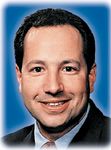Article
Emerging markets are worth a second look
Many of my colleagues have been investing in emerging markets and have done quite well. What's the attraction, and is it too late to hop on board?

A. Emerging market investments from countries whose economies are growing in progress and stability, such as China, India, and Brazil, are getting quite a bit of attention, as this asset class has been among the best performing over the last few years. A quick history review reminds us that after the last emerging market bull run, which created spectacular gains for investors from 1992 to 1997, the asset class lost more than 75% of its market gains after the initial run-up. Perhaps this time will be different.
The emerging markets have been maturing based on an increase in overall macroeconomic stability. The economic policy of the emerging world has now become more of a consensus of responsible policies. In addition, emerging market currencies, which have historically served as a drag on returns, are now a potential source of positive returns for investors with U.S. dollars.
The developing world has seen many changes over the past decade. In the past, emerging economies have struggled with a typical balance of payment crisis. This occurs when a country with a large current account deficit faces a significant capital outflow, leading to downward pressure on the country's currency and its reserves. As reserves decrease, the risk of a break in the currency increases, which then accelerates capital outflow. This situation may eventually lead to a collapse in that currency, causing an inability to pay for imports or to make interest payments on current debt. Fortunately, the majority of developing economies have adopted floating currency measures, which help absorb external currency shocks and prevent a crisis in a single country from spreading.
Most governments are implementing conservative fiscal policies and independent monetary policies. Large budget deficits and high inflation have been replaced by stable growth and price stability. Previously, U.S. dollar-based in-vestors lost significant value due to ad-verse currency movements in the emerging markets. This risk has been decreased as the fundamentals of emerging market currencies have improved dramatically in recent years.
Today, in aggregate, emerging markets are running significant current account surpluses and are also net creditors to the rest of the world. In addition, foreign investment continues to flow to the developing countries, attracted by the potential for higher investment returns.
Developing countries have been growing at a much faster rate than those in the developed world. The International Monetary Fund has estimated that the average annual growth rate of emerging markets has been double that of developed markets over the past 20 years. This historic growth pattern has allowed countries such as China, India, and Brazil to create considerable wealth, which has positively impacted their global growth. Interestingly, about 85% of the world's population is living in developing countries.
As part of an overall diversified portfolio, having some level of exposure to the emerging markets can certainly make sense. This can be accomplished by investing in publicly traded mutual funds, which offer diversification among many emerging market countries. In order to invest in one particular country, another option would be to utilize Exchange Traded Funds, which trade on the U.S stock markets.
Q. I am 50 years old and am in need of short-term funds for an investment I would like to make without having to take out a loan. Can I use the money in my IRA and then deposit it back into the same IRA or into another one?
A. If you withdraw funds from an IRA, but redeposit the funds back into an IRA within 60 days, there are no current income tax ramifications. When all of the requirements are met, IRA rollovers are tax free and exempt from the usual 10% penalty on early withdrawals before age 59½.





